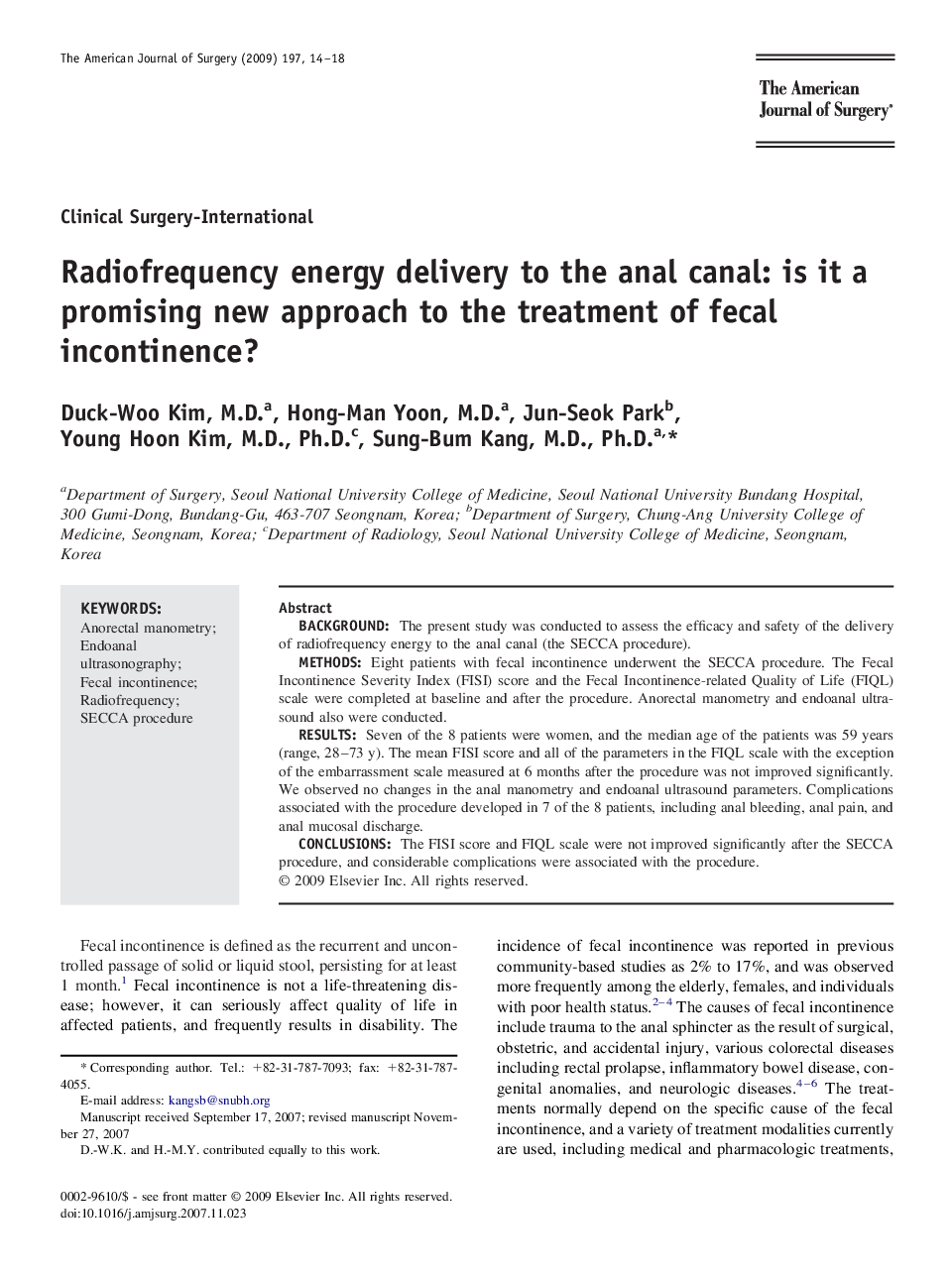| Article ID | Journal | Published Year | Pages | File Type |
|---|---|---|---|---|
| 4280559 | The American Journal of Surgery | 2009 | 5 Pages |
BackgroundThe present study was conducted to assess the efficacy and safety of the delivery of radiofrequency energy to the anal canal (the SECCA procedure).MethodsEight patients with fecal incontinence underwent the SECCA procedure. The Fecal Incontinence Severity Index (FISI) score and the Fecal Incontinence-related Quality of Life (FIQL) scale were completed at baseline and after the procedure. Anorectal manometry and endoanal ultrasound also were conducted.ResultsSeven of the 8 patients were women, and the median age of the patients was 59 years (range, 28–73 y). The mean FISI score and all of the parameters in the FIQL scale with the exception of the embarrassment scale measured at 6 months after the procedure was not improved significantly. We observed no changes in the anal manometry and endoanal ultrasound parameters. Complications associated with the procedure developed in 7 of the 8 patients, including anal bleeding, anal pain, and anal mucosal discharge.ConclusionsThe FISI score and FIQL scale were not improved significantly after the SECCA procedure, and considerable complications were associated with the procedure.
